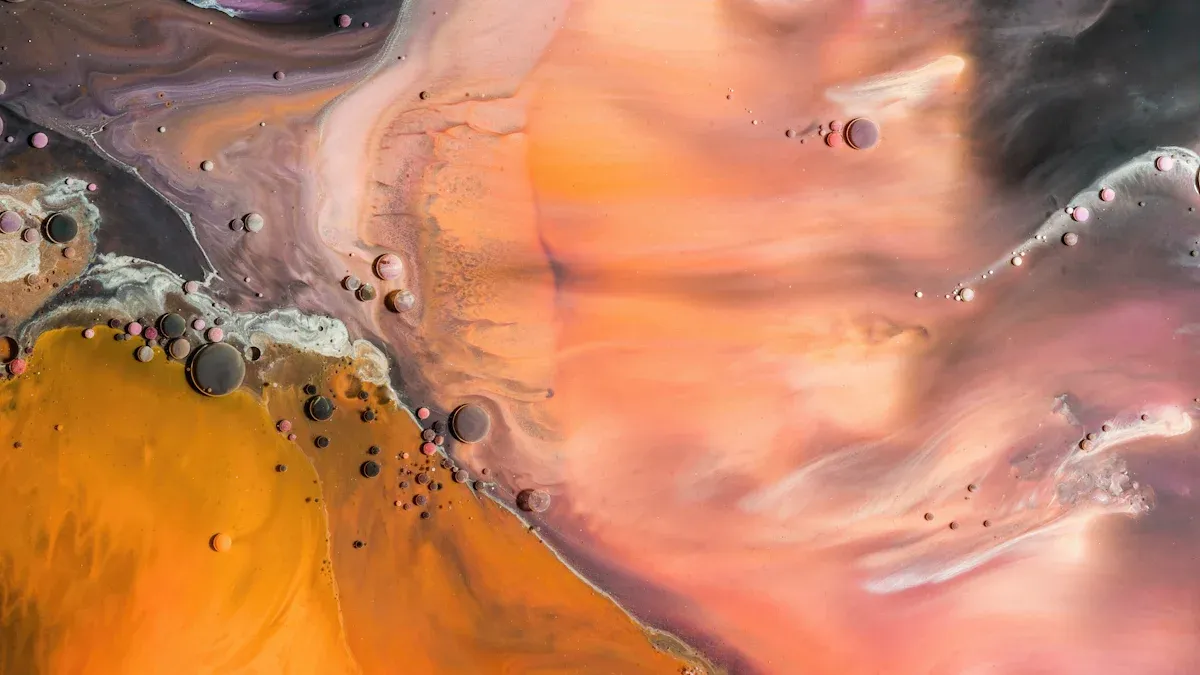
Acrylic paint is becoming a popular choice for customizing bike frames. Many cyclists like using acrylic paint on their bike frame because it is easy to use and inexpensive. Here are some reasons why it is gaining popularity:
Factor | Description |
|---|---|
Ease of application | You can use acrylic paint on your bike frame without needing to buy many expensive spray cans. |
Cost-effectiveness | Acrylic paint is cheaper than purchasing various types of paint for your bike frame. |
Durability | Acrylic paint can withstand weather conditions well without fading significantly over time. |
So, is acrylic paint a good choice for your bike frame? Let’s explore the pros and cons!
Key Takeaways
Acrylic paint is cheap and simple to use. This makes it a good option for customizing bike frames at home.
Acrylic paint gives a nice finish, but it can scratch easily. It might not hold up well in bad weather.
To make an acrylic-painted bike frame last longer, you need to prepare the surface well and take care of it regularly.
Pros of Acrylic Paint

Durability
Acrylic paint is pretty strong compared to other choices. It may not be as tough as powder coating, but it still resists wear and tear well. Here’s how it compares to other paint types:
Paint Type | |
|---|---|
Powder Coating | More durable than acrylic lacquer or enamel |
Acrylic Lacquer/Enamel | Less durable than powder coating |
Catalyzed Automotive PU | More durable than both powder coating and acrylic paints |
So, while acrylic paint isn’t the best for extreme conditions, it is still durable enough for everyday use.
Cost-Effectiveness
One big reason to use acrylic paint is that it saves money. If you like DIY projects, painting your bike frame at home can help you save a lot. You will need some basic tools, but this small cost can save you money later. For example, buying a bottom bracket tool can help you avoid expensive professional help. Also, learning good masking and painting skills can stop mistakes that could cost a lot to fix.
Ease of Application
Using acrylic paint is easy, which makes it popular with DIYers. You don’t have to be a pro to get good results. Here are the basic steps to apply acrylic paint to a bike frame:
Conceptualization: Start with a design idea for your bike.
Selecting a Painter: If you’re not doing it yourself, find someone who understands your vision.
Post-Painting Assembly: Decide whether to reassemble the bike yourself or hire a mechanic.
Meticulous Disassembly: Carefully remove bike components if you’re repainting an old frame.
Eradicating History: Determine if you need to strip the old paint completely.
Patience in Spades: Be ready for a waiting period between painting and reassembly.
This process is simpler than other paint types, making it easy for anyone to try.
Finish Quality
The finish of acrylic paint can look really good. When done right, it gives a smooth, shiny look that makes your bike look better. Good quality acrylic paint sticks well to different surfaces, so your bike will look great on the road. Just remember, getting that perfect finish needs careful work during application.
Cons of Acrylic Paint

Vulnerability to Scratches
One big downside of using acrylic paint on your bike frame is that it scratches easily. It can look nice when first painted, but it doesn’t last well with daily use. Many people say that acrylic paint chips and scratches more than other finishes, like powder coating. For example, if you lean your bike against something or drop it, the paint may get damaged quickly.
Powder coating is much tougher than acrylic paint. Users say their powder-coated frames stay scratch-free even after rough use.
A rattlecan paint job, often using acrylic, may look good at first but will likely chip later.
Scratches on acrylic-painted frames are usually just cosmetic. This means they don’t affect how strong the bike is. However, they can be annoying. Light sanding and touch-up paint can help fix these cosmetic problems, but expect some wear as you ride.
Weather Resistance
Another issue with acrylic paint is how it handles weather. Acrylic paint can break down when it gets too much UV light, rain, or temperature changes. Here’s how these things can affect your bike frame:
UV Exposure: Over time, sunlight can make the paint fade and lose its shine.
Rain and Humidity: Studies show that moisture can make acrylic coatings break down faster. If you live in a wet area or ride in the rain a lot, your paint might not last long.
Temperature Fluctuations: Changes in temperature can also hurt the durability of acrylic paint.
If you plan to ride in different weather, you might want to think about a stronger option for your bike frame.
Long-Term Maintenance
Taking care of an acrylic-painted bike frame can be harder than you think. Common long-term problems include:
Corrosion: Especially in steel frames, moisture can cause rust if not managed well.
Paint Chips: Over time, you might see chips in the paint, especially if you ride a lot.
Dents: Accidental bumps can leave marks that are tough to fix.
To keep your bike looking nice, you’ll need to prevent moisture build-up and think about using rust inhibitors during maintenance. Regular care can help your paint job last longer, but it takes effort.
Application Limitations
When you apply acrylic paint, there are some limits that can affect how it turns out. Here are a few things to remember:
Adhesion Issues: Acrylic paint might not stick well to some frame materials. You need to pick the right paint for your bike’s material.
Surface Preparation: Proper preparation is very important. You must clean and maybe sand the frame to ensure good adhesion. If you skip this step, the paint might peel or chip later.
Time and Patience: You’ll need to wait for the paint to dry completely between coats. Rushing this can lead to a not-so-great finish.
If you enjoy DIY projects, these challenges can be manageable, but they do need careful planning and execution.
In conclusion, acrylic paint has many benefits for customizing bike frames. It dries fast, has bright colors, and is safer to use. But, you should think about its drawbacks, like needing to prepare the surface well and being easy to scratch. To keep your paint job safe, consider using AMS Clear Frame Protection or a bike protection film kit. If you want the best paint for motorcycle fairings, acrylic can be a good option, but make sure to think about your choices carefully.
FAQ
What should I do to prepare before painting a bike frame with acrylic paint?
You need to clean and sand the frame first. This helps the paint stick better and last longer.
Can I use acrylic paint to customize my bike?
Yes, you can! Acrylic paint lets you create a unique look for your bike. Just make sure to follow the right steps when applying it.
Is acrylic paint good for painting motorcycle tires?
You can use acrylic paint on motorcycle tires, but it’s not a good idea. Tires need stronger paint that can handle wear and tear better than acrylic.
See Also
Essential Guidelines for Safely Painting Carbon Bike Frames
Advantages and Disadvantages of Aluminum Bike Frame Strength
Comparing Enduro Bike Frame Materials for Durability and Strength
Understanding Carbon, Aluminum, and Steel Bike Frames for Shoppers
